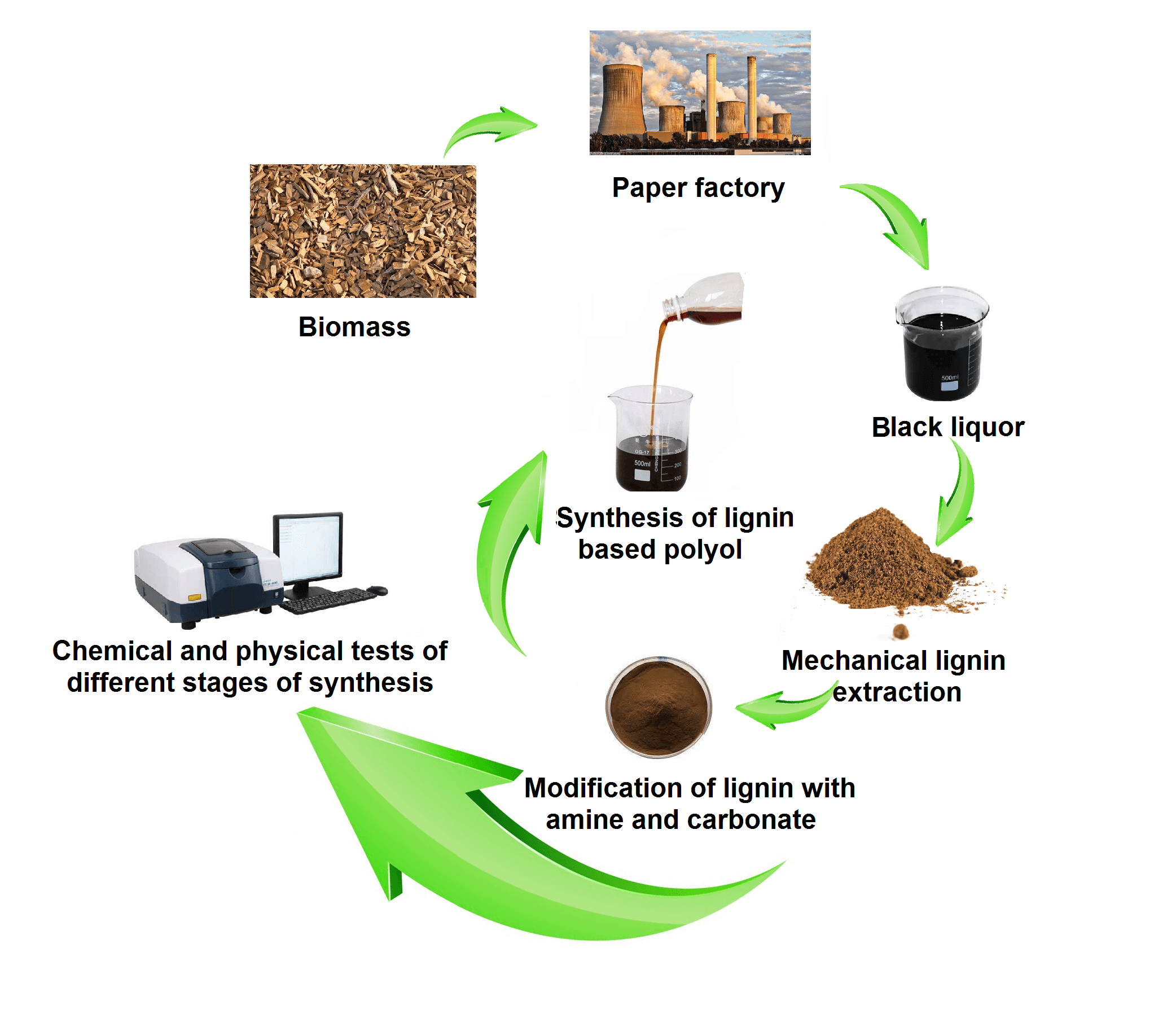 Open Access
Open Access
ARTICLE
Effect of Amine Type on Lignin Modification to Evaluate Its Reactivity in Polyol Construction for Non-Isocyanate Polyurethanes (NIPU)
1 Department of Wood Science and Technology, Faculty of Natural Resources, Tarbiat Modares University, Tehran, Iran
2 Department of Resin and Additives, Institute for Color Science and Technology, Tehran, Iran
3 LERMAB, University of Lorraine, Blvd des Aiguillettes, Nancy, France
* Corresponding Authors: Antonio Pizzi. Email: ; Fatemeh Hassani Khorshidi. Email:
Journal of Renewable Materials 2023, 11(5), 2171-2189. https://doi.org/10.32604/jrm.2023.027835
Received 17 November 2022; Accepted 13 December 2022; Issue published 13 February 2023
Abstract
Polyols are groups of organic compounds which contain carbon and are randomly linked to other atoms, especially carbon-carbon and carbon-hydrogen. These compounds are mainly used as reactants to make other polymers. Among biopolymers, lignin is regarded as the base of a new polymer in polyol construction. The present study aimed to investigate the effects of amine type (diethylenetriamine and ethylenediamine) on the modification of lignin-based polyols, so as to provide an alternative to petroleum polyols and, in turn, increase functional groups and reduce their harm to humans’ health and the environment. To this aim, first, lignin was extracted from raw liquor. Next, the extracted lignin was reacted with diethylenetriamine (DETA) and ethylenediamine (EDA). Finally, the Mannich method was used for the reaction between amine lignin and propylene carbonate. The results of the Fourier Transform Infrared (FTIR) spectroscopy analysis showed that modification with DETA led to more structural change in lignin and peak 1100 indicates the presence of C–O bond related to urethane bonds in modified lignin. Moreover, adding propylene carbonate to aminated lignin did not result in much change in the results of the FTIR analysis. Additionally, urethane bonds can be seen in the results of GPC at 400°C–500°C. Furthermore, a slight decrease in thermal stability was observed in lignin modified with amine and propylene carbonate, compared to the raw lignin sample.Graphic Abstract

Keywords
Cite This Article
 Copyright © 2023 The Author(s). Published by Tech Science Press.
Copyright © 2023 The Author(s). Published by Tech Science Press.This work is licensed under a Creative Commons Attribution 4.0 International License , which permits unrestricted use, distribution, and reproduction in any medium, provided the original work is properly cited.


 Submit a Paper
Submit a Paper Propose a Special lssue
Propose a Special lssue View Full Text
View Full Text Download PDF
Download PDF Downloads
Downloads
 Citation Tools
Citation Tools